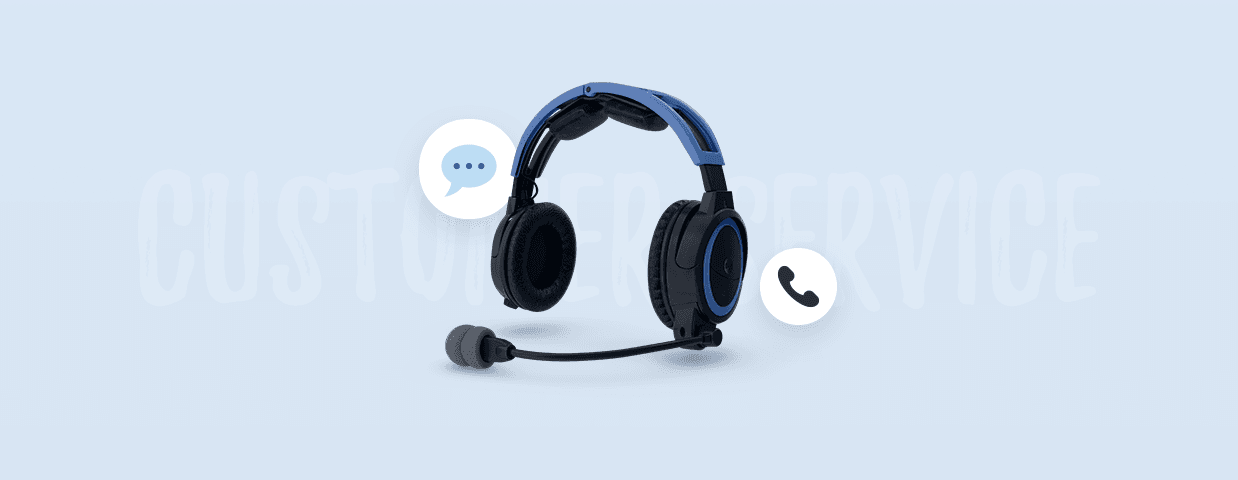Some customers don’t even bother to call for customer service because getting through takes too long.
Disappointing, I know. But hardly surprising.
Luckily, you can provide different types of customer service—in particular, via digital channels to try to meet customers’ expectations.
Companies increase investments in live chat, artificial intelligence, and contact center technology to ensure omnichannel experiences for customers—according to the latest Customer Experience (CX) Transformation Benchmark Study by NICE.
Read on if you don’t want to be left in the dust by your competitors.
Learn how to use AI to take your customer service to the next level
Live chat
Of all types of customer service, live chat is arguably the best a business can have in its arsenal against the increasing customer churn.
Why?
It’s a good mixture of what’s best about email and phone customer service. You get to solve your customers’ issues in real-time and from the comfort of your own home. Perfect!
Live chat support has a significant advantage over other customer service types, though. It allows for proactive customer service. It means that you can offer your help before your consumers ask for it. Taking the initiative in communicating with customers reduces their perception of the effort required to get something done and increases engagement.
Due to its unique advantages over phone and email channels, live chat has a tremendous satisfaction rate of up to 89% (depending on the industry)—according to the Live Chat Benchmark 2020 report.
Speed, convenience, and many other live chat benefits boost satisfaction and conversion by a whooping rate of 20%! And the rate goes up when it’s optimized for mobile devices.
Live chat pros:
- High efficiency at a reduced cost
- Supports handling several customers at a time
- Canned responses to automate repetitive replies
- Saves web chat conversation history
- Proactive customer service
- File transfer
- Integration with various third-party apps
Live chat cons:
- Older demographics struggle with it
- High expectations for first response time (46 seconds)
- Some chat widgets are not optimized for mobile devices
Want to learn more?
- What is a live chat
- How to install a live chat button on a webpage
- How to provide customers service via live chat
- Best web chat software
- Best chatbot alternatives and competitors
How can serving customers via live chat help you grow?
Live chat can help you serve different types of customers and grow your business. It helped Phare, the Cambodian Circus boost the number of ticket sales via Facebook.
The Circus officially launched in 2013. Since then, it’s become the number one attraction in the region with over 12,000+ happy customers on TripAdvisor.
As the word of their performances spread, the Circus experienced an increased number of customer requests and bookings. They’ve looked for an inexpensive and easy-to-use way to serve tourists. The phone service wasn’t a viable option.
After testing multiple solutions, they decided to install Tidio live chat on their website. It is free and takes under three minutes to start chatting. In five months, between May and October 2020, Phare Circus has had over 2,267 conversations using this type of customer service.
As a result, the Circus increased ticket booking by 30%.
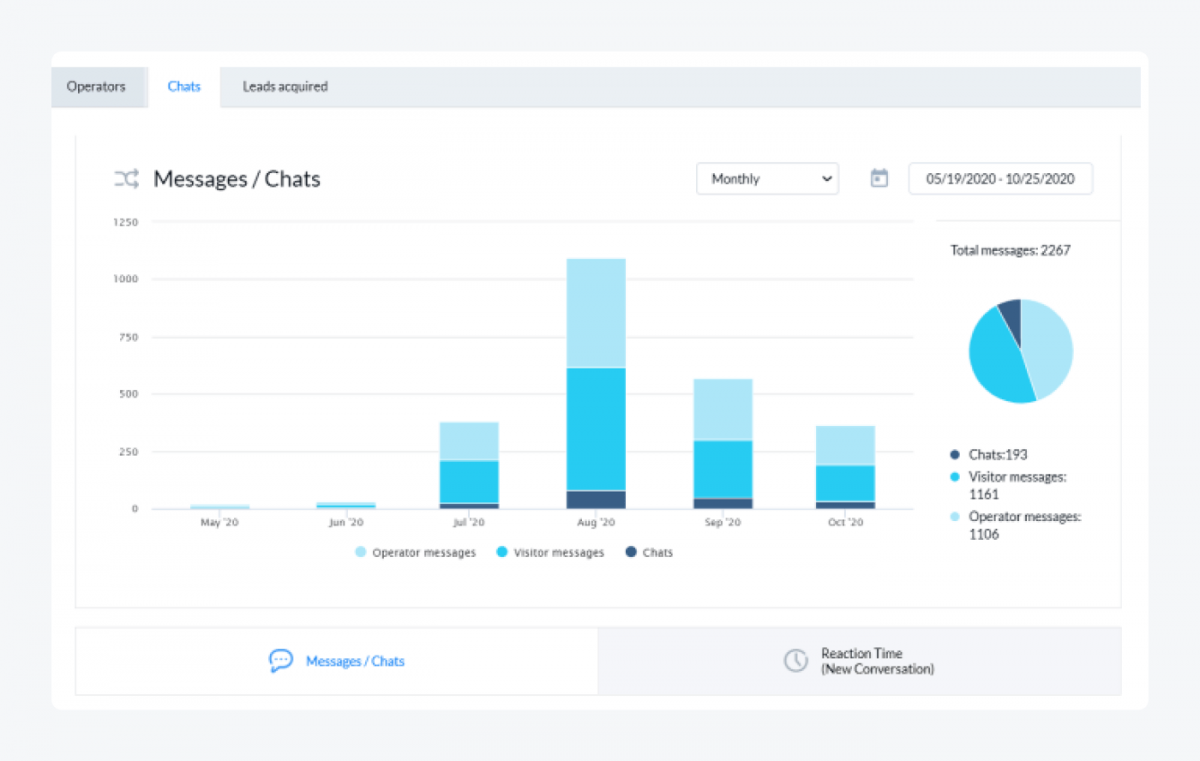
But because most of the population in Cambodia use Facebook to stay connected, integrating customer service with the platform was key to help potential customers learn more about the Circus and book tickets. When they integrated the live chat with Messenger, their lead generation went through the roof.
It’s thanks to choosing the type of customer service that suited their audience.
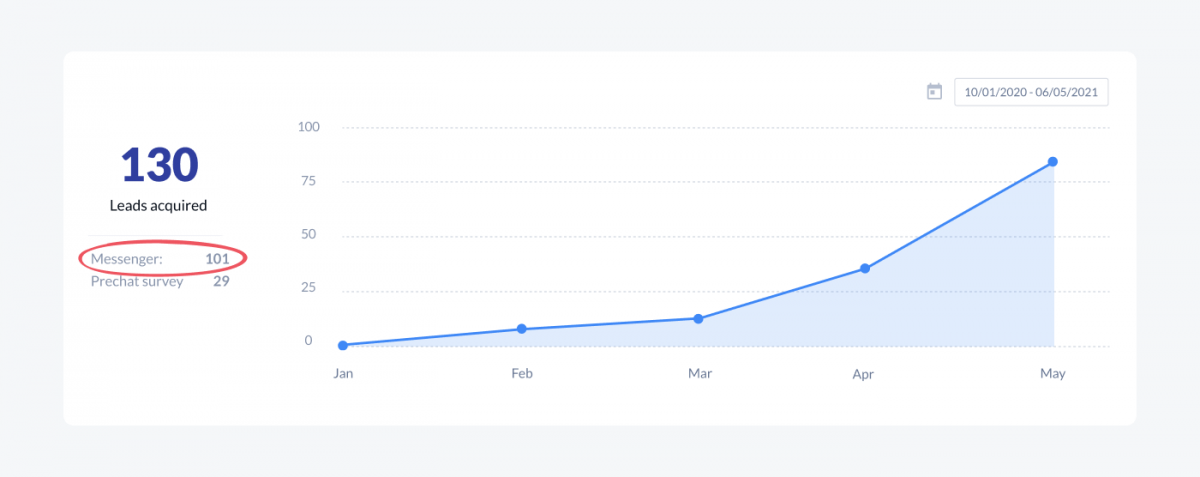
Read more: Discover essential live chat statistics and benchmarks to stay on top of trends. Also, learn all the differences between live chat and chatbots to pick the right solution for your business.
Chatbot
What are chatbots? They are tireless round-the-clock virtual assistants. They can answer customers’ questions, help with shopping, collecting feedback, or booking appointments. Advanced bots can even discover diseases and perform legal tasks.
For consumers, the most significant benefit of customer service chatbots is that they can receive support 24/7. Millennials, who are used to receiving instant gratification, find this type of customer service especially appealing.
Chatbots are one of the fastest types of customer service interactions—chatbots can access stored customer data and process it in seconds to deliver a personalized experience, e.g., pull up last order details.
In fact, they can process hundreds of customer inquiries that are generally simple to respond to at the same time. According to an IBM report, they can handle up to 80% of routine questions. It allows your service team to focus on the more complex requests.
The BI Intelligence study has found that 48% of consumers care more about whether a chatbot can solve their issues than its personality. But you can give your chatbot a personality to reflect your brand voice and increase customer engagement.
For example, you can customize the welcome message—whether you greet customers with “Howdy,” “Sup,” or “Good morning” does make a difference to how they perceive your brand.
Companies, too, take advantage of ecommerce automated customer service. Businesses using chatbots reap various benefits, but cutting costs is the most significant one. Thanks to chatbots, a company can save up to 30% on assisting customers. Bots are estimated to save banking, healthcare, and retail sectors up to $11 billion annually.
Chatbot pros:
- Available 24/7
- Immediate assistance
- Cost-effective
- Easy to install software
- Collect customer data
- Generate high-quality leads
- High return on investment
- High satisfaction rate, especially among younger generations
- Their accuracy improves over time
- Option to transfer chats to human agents
- Human agents experience less burnout
Chatbot cons:
- Can’t solve complex issues
- Wrong or robotic answers frustrate people
- Conversation design requires logical thinking
- AI technology and automated customer service are often misunderstood
Want to learn more?
- How to create a chatbot?
- Chatbot examples in customer service
- How to use chatbots for business
- Best chatbot platforms
What types of customer service interactions can chatbots cover?
Chatbots can cover all kinds of interactions, from simple order updates to recommending products and services. Here’s how they helped Mometrix decrease cart abandonment rates.
Mometrix started as a brick-and-mortar bookstore and transformed into an online platform in 2019. They decided to invest in Google Ads, SEO, and affiliate marketing to bring in traffic.
Using a virtual assistant paid off so much that they couldn’t keep up with all the emails and phone calls they received. The platform’s owner didn’t want the rapid growth to backfire on him. He knew customer satisfaction was key to the success of his project.
He needed to provide technical support to users, educate them about the product, and answer FAQs most efficiently. Tidio chatbots ticked all the boxes. Additionally, Tidio comes with pre-made chatbot templates to speed up the process.
At first, Mometrix added three different customer service bots:
- Auto reply for missed conversations
- Unavailable operator
- And cart abandonment
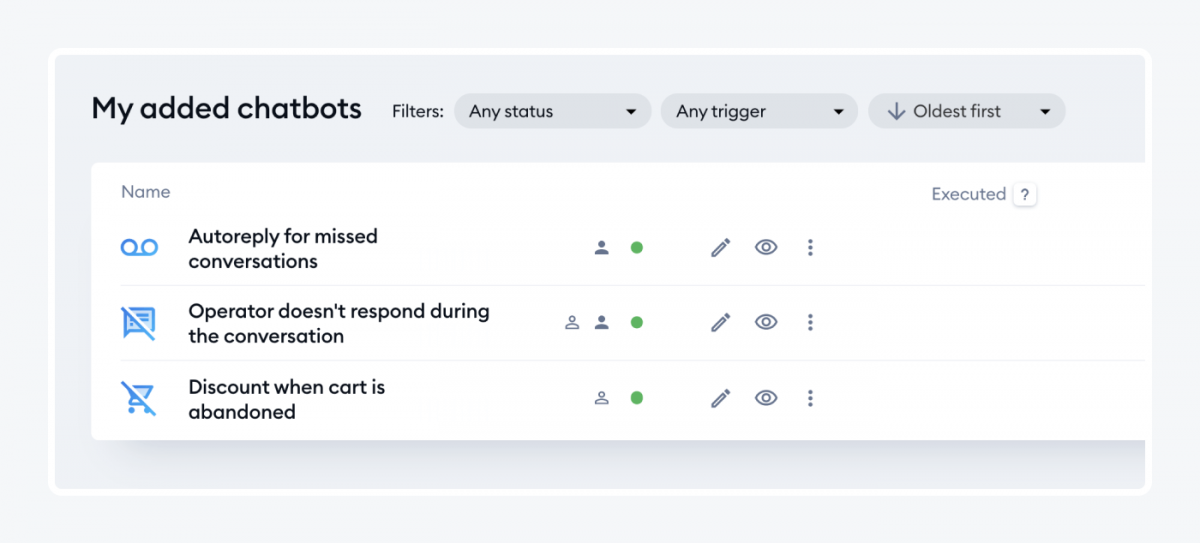
The last one turned out to be the most profitable—The bot fired up on a check-out page after 10 seconds, offering a 25% discount on the products in the shopping cart. It slashed cart abandonment by 25%.
When Mometrix implemented chatbots on several more URLs, he doubled the number of generated leads.
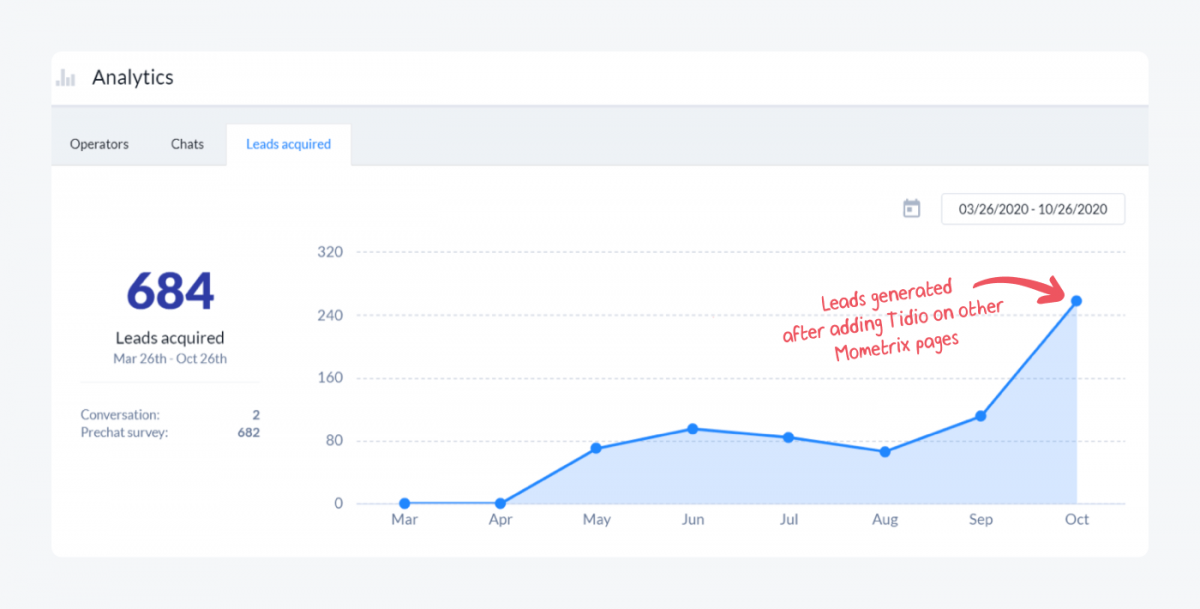
There are several ways in which you generate leads with live chat and chatbots, and they are much more effective than cold calling.
Contact center (phone)
Despite the rapid development of digital customer service types, people still use phones to contact businesses. When it comes to resolving more complicated interactions, such as payment disputes, 40% of customers prefer talking to a real person over the phone.
So, phone support is far from being dead. Mainly because traditional call centers evolved into contact centers that now handle customer requests using more than a single channel and integrate phone, text messaging, chat, email, etc. They use sophisticated analytics and customer relationship management (CRM), and more. There is a variety of customer relationship management software to choose from that offers different features depending on your business needs.
During the 2020 global pandemic, contact centers experienced major disruptions. Firstly, they had to move customer service reps home very quickly. Secondly, they had to handle a surge in interaction volume. Interactions in this area of customer service increased by 57% during the Covid-19 outbreak.
Companies that already used cloud contact center technology had an advantage. According to Teledesk’s findings, cloud contact centers are 27% cheaper and experience 35% less downtime than their on-premise counterparts.
But call centers have their shortcomings too. The biggest pain point is still the long wait times—callers usually cut off the call after five minutes. Customers don’t like to be trapped in a never-ending interactive voice response (IVR) menu, making it hard to reach the human agent as soon as possible.
When dealing with customers over the phone, agents must present impeccable customer service skills. This type of customer service is difficult without ongoing customer service training and monitoring. One of the best ways to train the customer service team to deal with customers on the phone is by practicing customer service scenarios.
It’s not the best option for customer support that requires explaining technical issues, screen sharing, and transferring files.
Contact center (phone) pros:
- Improved customer experience
- Accessible to different age groups
- Easy to ask for more information
- More natural human-to-human interaction
Contact center (phone) cons:
- Long or unspecified hold times
- Difficult collaboration between teams (back-and-forth between client and agent)
- Costly to scale and outsource
- Needs technology to remain efficient
- Staffing issues—One agent deals with one customer
- Possible high charges for international customers
Want to learn more?
- Does cold calling work
- How to deal with angry customers
- Really bad customer service examples
How to provide good customer service on the phone?
If you’re looking for a great phone customer service example, reach out to Zappos. They rely on this type of customer service more than on advertising. They count on customers to do marketing for them—through word-of-mouth.
What differentiates Zappos from other brands is that they provide excellent customer care and use phones as the main means of communication with clients. As a result of in-depth conversations, they build close relationships with customers and cement their loyalty.
Zappos’ call centers have a unique metric—a board with “flower stats” that tracks small gifts that agents send out to customers. And they pride themselves on chatting to a customer for 10 hours just because they connected on a personal level.
The unconventional methods seem to pay off just fine—examples of customer orientation by Zappos all over social media and the news which means customers genuinely love the brand.
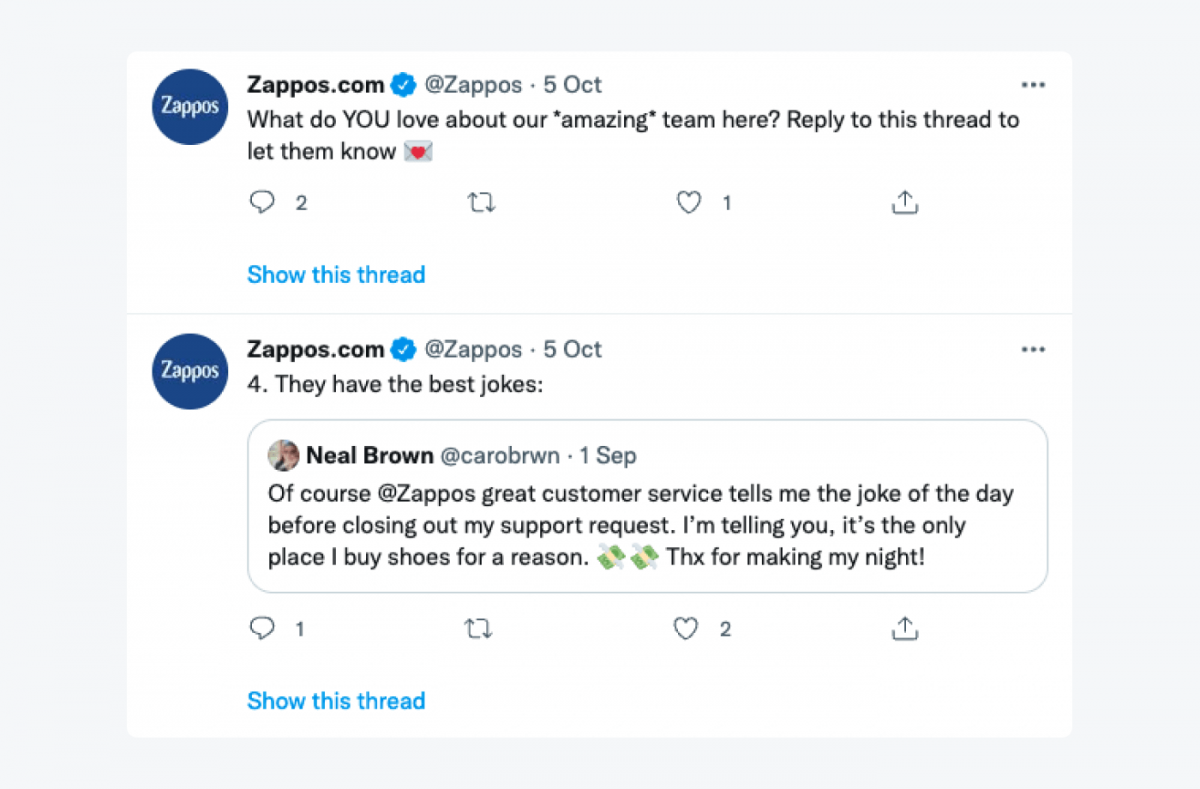
Email support was one of the first types of online customer service. According to the 2020 NICE global survey on customer experience, its first contact resolution may not be the highest. However, it’s still one of the top agent-assisted customer service channels in which businesses want to invest.
The main investment area is upgrading communication technology, which allows different channels to work together seamlessly.
About 54% of consumers said they had used email customer service channels last year. Email helps them to attach files and document important information without directly speaking to the agents.
A company that provides this type of customer support must remember to respond as soon as possible (not later than within 24 hours). If customer service representatives can’t reply within this timeframe, they should inform the sender about it.
Email pros:
- Well documented conversation history
- Easy to send files, links, etc.
- Canned responses for repetitive customer questions
- Customized email designs
- Professional email signatures
- Email automation to schedule and send follow-ups
- Convenient for clients in different time zones
Email cons:
- Time-consuming message exchange
- Difficult to personalize experiences
- Difficult to read emotions
- You have to pick the best time to send emails
Want to learn more?
- How to write an apology letter to customers
- Use customer service email templates
- Tips for effective email communication
- Best email management software
Sometimes, when all other kinds of customer service fail, the email saves the day.
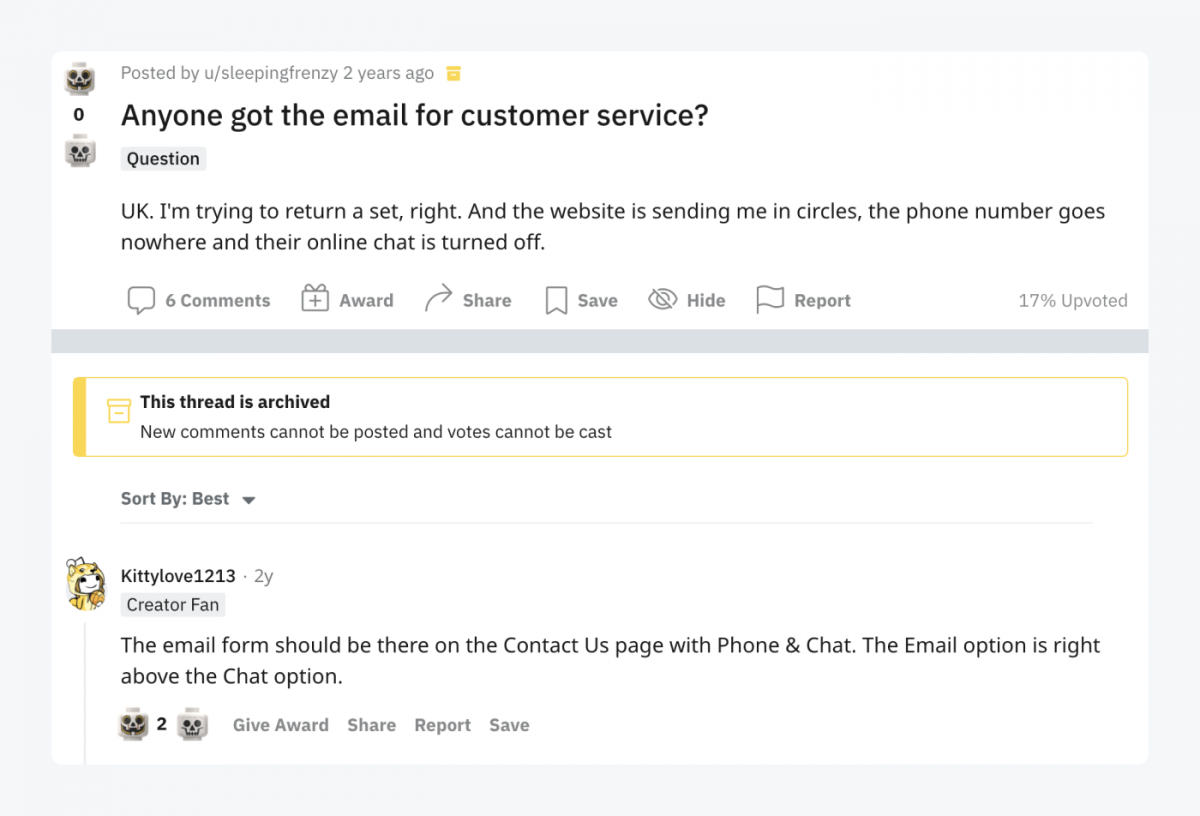
Customer self-service
Up to 80% of customers now are happy to use self-service options before they engage the company’s representatives. A recent Microsoft report on multichannel customer service finds that only 22%% of Americans can’t find the information they need in self-service portals.
The trick is not to limit yourself to FAQ webpage and exploring different types of self-service, like:
- Knowledge bases
- Chatbots
- Demos
- Video product tutorials
- Recorded webinars
- Ebooks
And even online forums where your customers can exchange tips and tricks on your product.
Customers nowadays are usually knowledgeable enough to try troubleshooting basic problems themselves. Provided that you ensure just the right amount of information, frequently update it, and organize it logically. After all, the goal of this customer service solution is to ensure customer success.
Don’t forget to add an escalation option in case the customer issue is too complicated and they need agents’ help. It could be a chat widget in the corner of your page.
To make the most of this type of customer service, your support agents need to know specific problems your customers face and typical questions they ask. It will help you prepare relevant information and organize it on your website.
Customer self-service isn’t only beneficial to customers. Businesses’ preference for self-service channels increased by 15 points from 43% vs. 28% in 2019.
One company found that customer self-service could save millions of dollars in maintenance costs—simply by enabling just one in twelve customers to self-troubleshoot their problems. The company estimated $10 million in savings in less than 18 months.
Customer self-service pros:
- Accessible 24/7on the company’s website
- Answers customer demand
- Combines various resources
- Can be multilingual
- Reduces support costs and time
Customer self-service cons:
- Maintenance and updating
- Labor-intensive in case of a complex product
- Requires good writing skills
- Impossible to cover all scenarios
Want to learn more?
- How to provide great customer service
- Why self-service is a key element of CX strategy
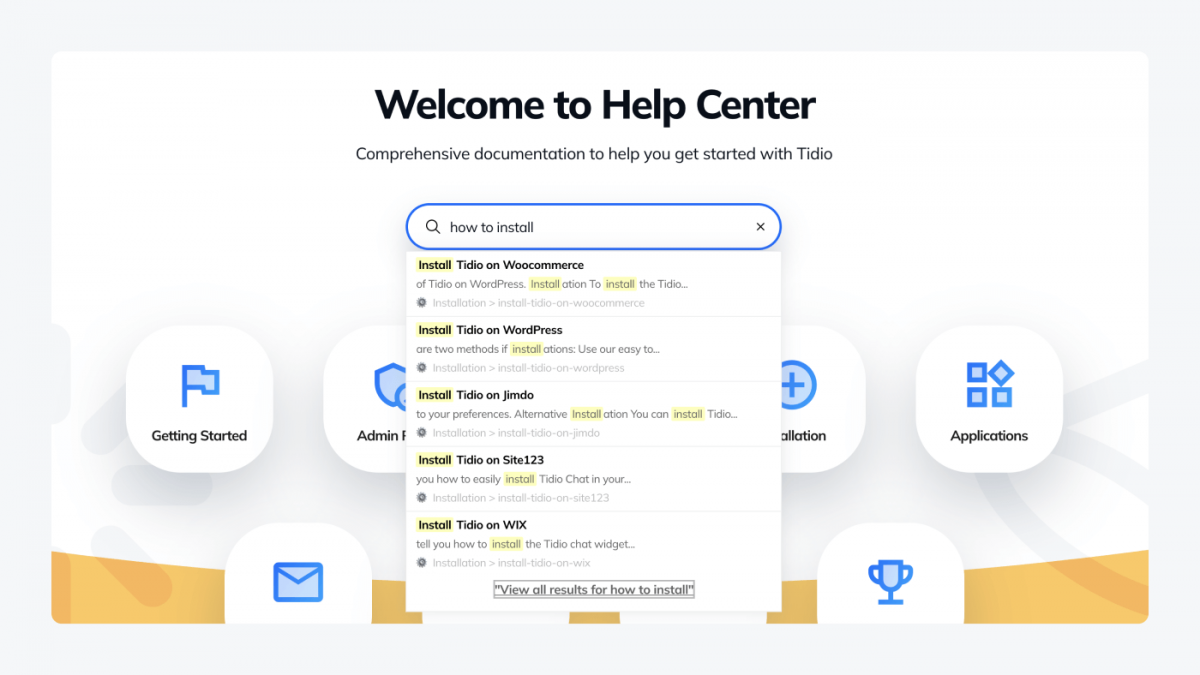
Social media customer service
Social media support is exactly what it says on the tin. You get it via social media channels, such as Facebook, Instagram, or Twitter. But you can also have customers on Pinterest, YouTube, and Snapchat, and more. The biggest advantage of this kind of customer support is that it reaches out to where your customers are.
If you think social media channels are for unhappy customers wanting to vent their frustrations about your product or service, think again. Customers use this type of customer service to praise brands rather than complain about them.
Whatever the interaction, respond sooner than later—14% of Americans expect a response within an hour, and 46% of them can wait up to 24 hours. Otherwise, you risk lowering customer loyalty by 50%.
If you can’t afford dedicated staff to resolve social media queries, you can integrate a live chat with FB Messenger. This way, you’ll receive direct messages sent via social media communication channels straight to the live chat inbox.
Social media customer service pros:
- Integration with live chat apps
- Little effort for customers
- Increases customer advocacy
- Provides personalized experience
- Customer-to-customer help
Social media customer service cons:
- Exposure to negative reviews and comments
- High customer expectations
- Can damage brand image
Find out more:
- Social media listening as a key element of VOC strategy
- Social media marketing as part of inbound marketing
- Social media monitoring tools
- Customer retention software
Some customers won’t be appeased with a quick reply on social media, anyways.

In-person customer service
Even though customers are more online than ever, good customer service bridges the online shopping experience with that in-store. You can connect them by offering Click and Collect services.
Curbside service options increased considerably since the 2020 pandemic outbreak—buy online, pick-up in-store purchases increased by 554% in May that year. This is to provide convenience for customers.
In-person customer service is also present outside retail, for example in the hospitality and food industry. Listen to Daren Ross TED Talk who talks about the concept of creating moments and the importance of customer experience as part of this type of customer service interaction.
In-person customer service pros:
- Personalized experience
- Cost-effective for merchants
- Easy rollout
- Omnichannel experience
- Natural face-to-face interactions
- Convenient for customers
In-person customer service cons:
- Unavailable outside regular working hours
- High customer expectations
- Consumer travel costs and time
- Needs customer-focused staff
Find out more:
- Effective strategies for customer communication
- Providing customer service in retail
- Top customer service books
Which types of customer service should you choose?
When you decide on the kind of interactions you want to have with customers, you need to consider different aspects of customer service types. The decision you make should depend on your buyer persona, team size, and current trends in customer service.
- Buyer persona—Identify the channels that work for your customer base best. Then, build your customer service options around these channels. Try different types of service and gauge customers’ preferences.
- Team size—Small businesses usually can’t afford investments in contact centers or expensive customer management options but can still use free yet effective tools, like live chat or email. They can later expand customer service options as their client base grows.
- Current trends—In the past, customer service was available from 9 to 5 on a channel convenient for the company. But the dynamics of customer service changed thanks to amazing technologies dramatically, and now you have to be present where your clients are when they need you.
And don’t forget, you should be where your customers are. Always adjust the type of service to your customers’ preferences.
